Each grower sets a goal to grow a full useful crop. To accomplish this task, you will need to make a lot of efforts, because creating an optimal environment for the growth and ripening of fruits in our climate is very difficult. Therefore, many summer residents prefer to grow vegetables in greenhouses, which allow you to get a crop throughout the year. Recently, polycarbonate has been used for the manufacture of greenhouse premises, because this material perfectly retains heat and protects seedlings from harmful ultraviolet rays.
Polycarbonate greenhouses are excellent for cultivating cucumbers in the Moscow region, because the region has rather variable weather conditions and therefore it’s not so easy to choose best varieties for open beds. In greenhouse conditions, not all varieties can be grown, so beginners should get acquainted with the most productive species intended for greenhouses.
Content
Advantages and disadvantages of polycarbonate greenhouses for growing cucumbers in the suburbs
Traditional materials for the construction of greenhouses are polyethylene and glass. The main difference between a polycarbonate greenhouse is its durability, which cannot be said about polyethylene structures. In addition, working with polycarbonate is quite simple and you can independently mount a greenhouse of the required size.
The material consists of honeycombs filled with air, so it perfectly retains the heat that is necessary for growing cucumbers. Its surface is covered with special varnishes that do not pass ultraviolet.
The polycarbonate construction has the following advantages:
- passes the maximum amount of sunlight;
- due to the strength of the material, the greenhouse is not susceptible to mechanical damage;
- polycarbonate is quite plastic, so the summer resident can give the structure any shape;
- service life varies between 10-20 years;
- The material is resistant to high humidity and water.
A polycarbonate greenhouse looks great on the site, because outwardly it is quite attractive. Due to the lightness and plasticity, working with the material is very simple and comfortable, because in such a design you can easily install partitions or windows. In addition, polycarbonate can be welded, glued and drilled. It can be cut with both a jigsaw and reinforced scissors.
In such a greenhouse, the crop of cucumbers ripens somewhat earlier than in film analogues. In the cold season, polycarbonate can save on heating, because it creates a greenhouse effect and has little heat loss.
The disadvantages of the material include flammability, because it will melt from exposure to open fire. The cost of such a greenhouse is quite high, but it depends on the quality of the material and the size of the planned design.
The best varieties of cucumbers for polycarbonate greenhouses in the suburbs
Before starting to buy seeds, each newcomer must decide which varieties are best grown in the greenhouse and for what purposes they will be used. For example, if vegetables are intended for sale, then pick cucumbers that are stored for a long time and do not deteriorate during transportation. If the crop is to be harvested for the winter, then varieties are selected specifically for conservation.
Berendey F1
Berendey F1 refers to parthenocarpic precocious hybrids. Mid-sized cultures form from 3 ovaries in a knot. Harvest can be harvested 45 days after germination. Cylindrical cucumbers, which grow about 14 cm, have a tuberous surface with white spikes. The hybrid is universal, it is great for both salads and canning.
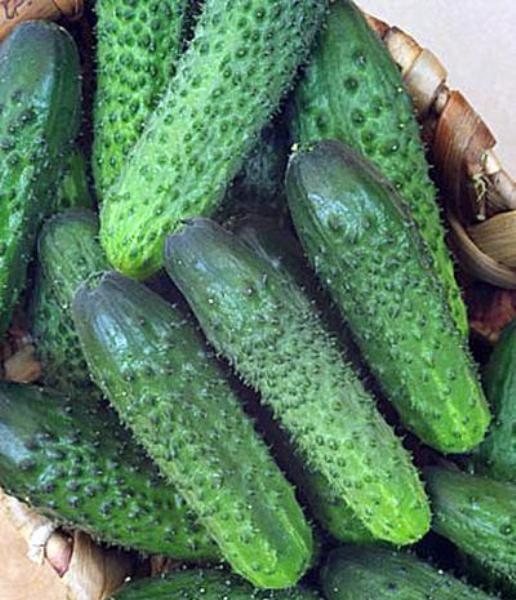
When creating optimal conditions from one bush, you can collect about 8 kg of juicy greens. The hybrid is characterized by shade tolerance and a high yield. When growing varieties in greenhouse conditions, trellises must be installed. Watering is carried out as necessary, because their frequency depends on the temperature and lighting of the greenhouse.
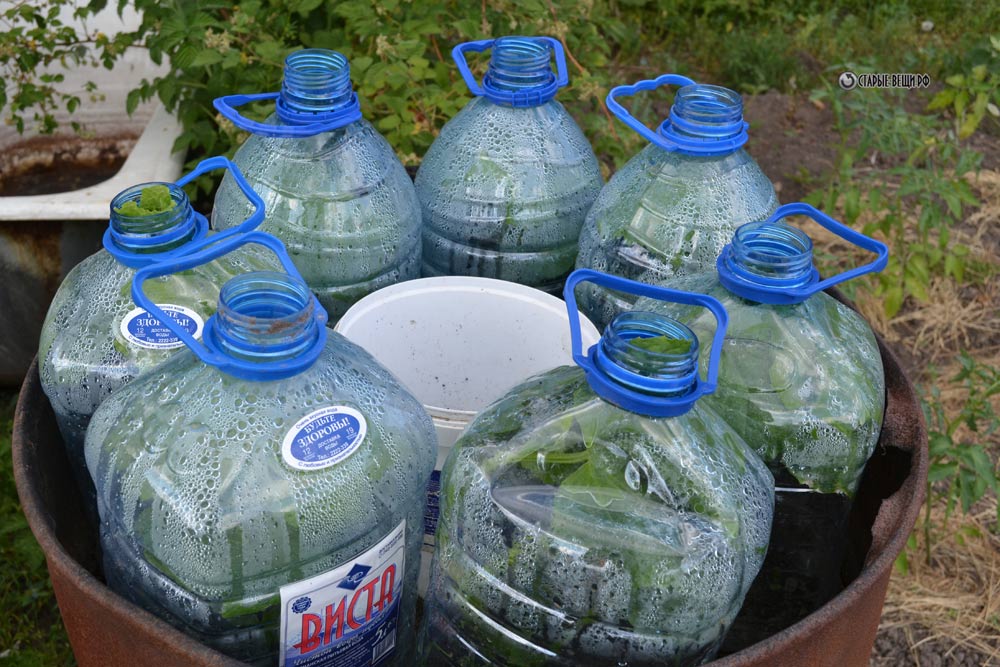 You may be interested in:
You may be interested in:April F1
An early ripe variety that ripens 40-45 days after germination of seedlings. Parthenocarpic grade of medium branching requires mandatory pinching and installation of trellis. A feature is a long fruiting period, and cucumbers do not turn yellow for a long time. The main disadvantage of the hybrid is instability to white rot.
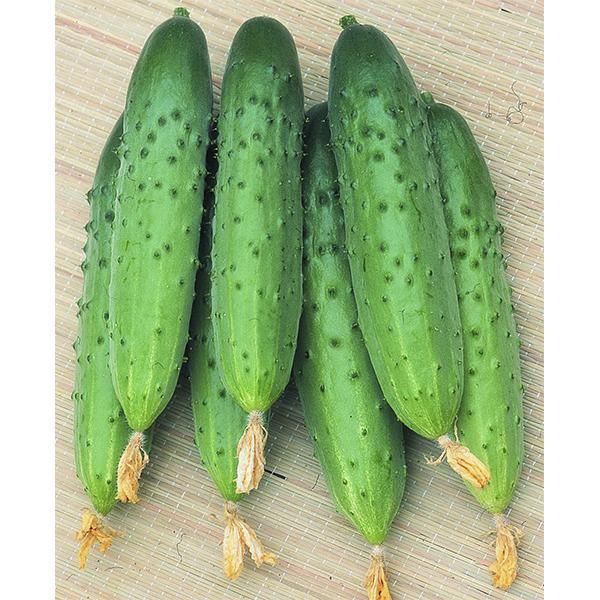
Courage F1
Partenocarpic variety has a bundle of ovaries. In one node, 2-4 fruits grow on the main lash, and from 5 to 8 on the lateral lashes. About 30 cucumbers can ripen at the same time. The length of the green stuff varies between 12-15 cm, and the weight is 12-140 g. An early ripe hybrid gives the first crop 38-44 days after the formation of seedlings. The plant should be kept in one stem, therefore, in the sinuses of the first 6 leaves, all side lashes and ovaries should be removed.
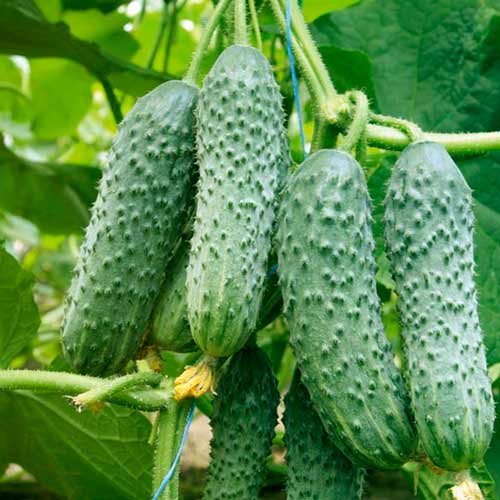
Goosebump F1
Goosebumps also belong to early ripe cucumbers. Fruiting begins after 35-40 days from full germination. The medium-sized plant has shortened internodes, and 2-4 ovaries are simultaneously formed in one sinus.
Cylindrical coarse-green Zelentsy grow about 10 cm in length. The variety shows excellent taste when salting and pickling. The plant needs pinching, which is carried out on the main stem after 5 or 6 leaves. Side lashes are cut to a length of 40 cm.
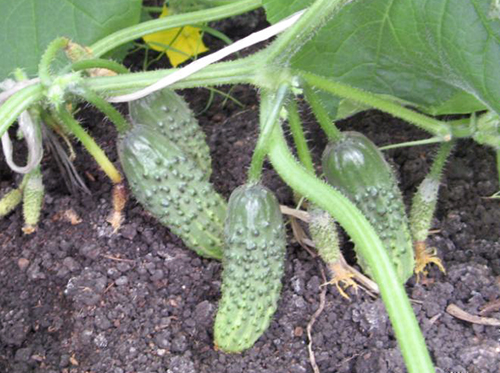
Boy with thumb F1
The little finger boy belongs to the early fasciculate parthenocarpic hybrids of the gherkin type. Sredneteply bushes form from 2 to 6 ovaries of a bouquet type. The length of the fruit does not exceed 11 cm.
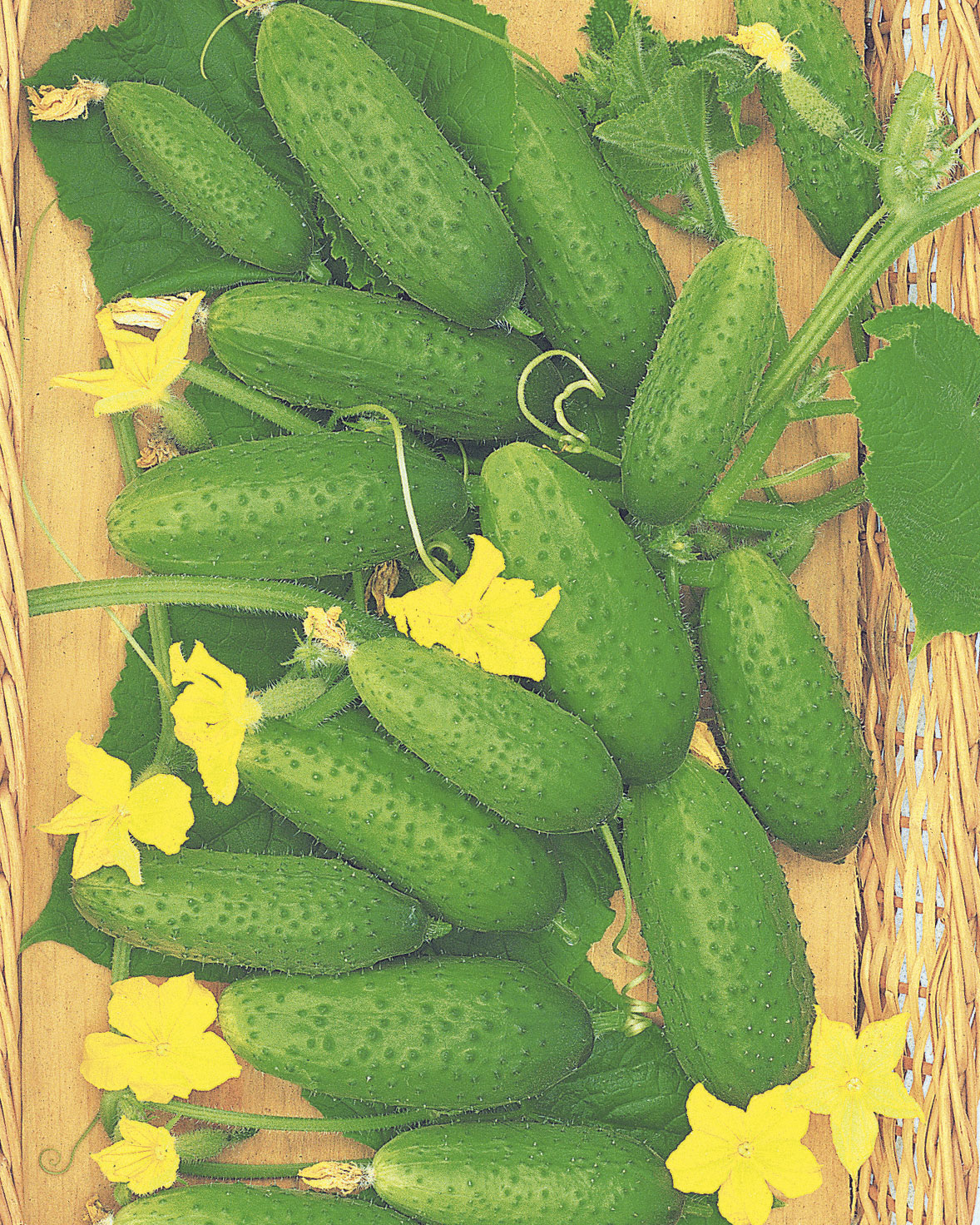
Cucumbers are considered universal, because they are used both fresh and for conservation. For longer fruiting, plants are tied to a high transverse trellis. To stimulate the development of side lashes, the bush is nipped after the formation of the fifth true leaf.
Cornucopia F1
Parthenocarpic hybrid is successfully grown not only in greenhouses, but also in open ground. The length of green stuff reaches 12 cm. A distinctive feature of cucumbers is the lack of a tendency to overgrow. A high-yielding variety in closed ground gives about 29 kg / m2 per season.
Most often, the fruits are used for harvesting for the winter.
Zozulya F1
Zozulya F1 is partly parthenocarpic plant, which allows it to form fruits without pollination. To increase the yield, it is advised to plant male plants for the variety. Zelentsy are covered with rare large tubercles and white spikes.The length of the fetus is 14-24 cm. Cucumbers are unpretentious in care and resistant to disease. Lateral branching is very limited, so pinching and pinching in this culture will not be needed.
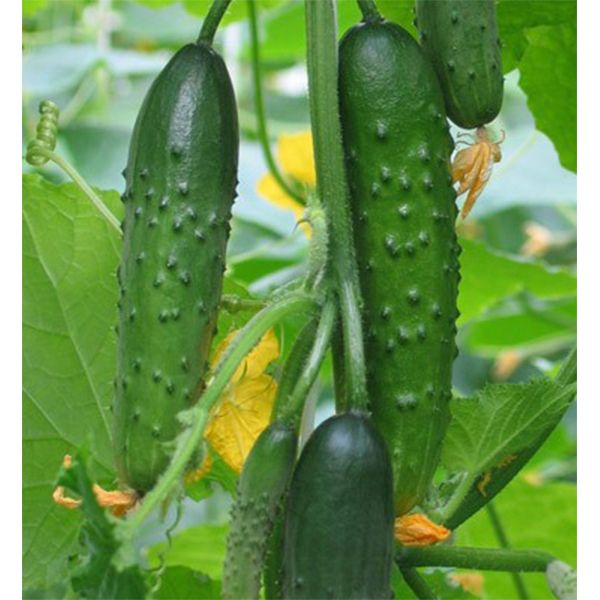
Business F1
This hybrid belongs to mid-early cucumbers and has a mixed type of flowering. A bee-pollinated plant is often grown in open ground, but it is possible to grow in greenhouse conditions with self-pollination. The length of the fetus varies between 8-10 cm. The surface is covered with rare tubercles and black spikes. Fruits are advised to use for salting and canning.
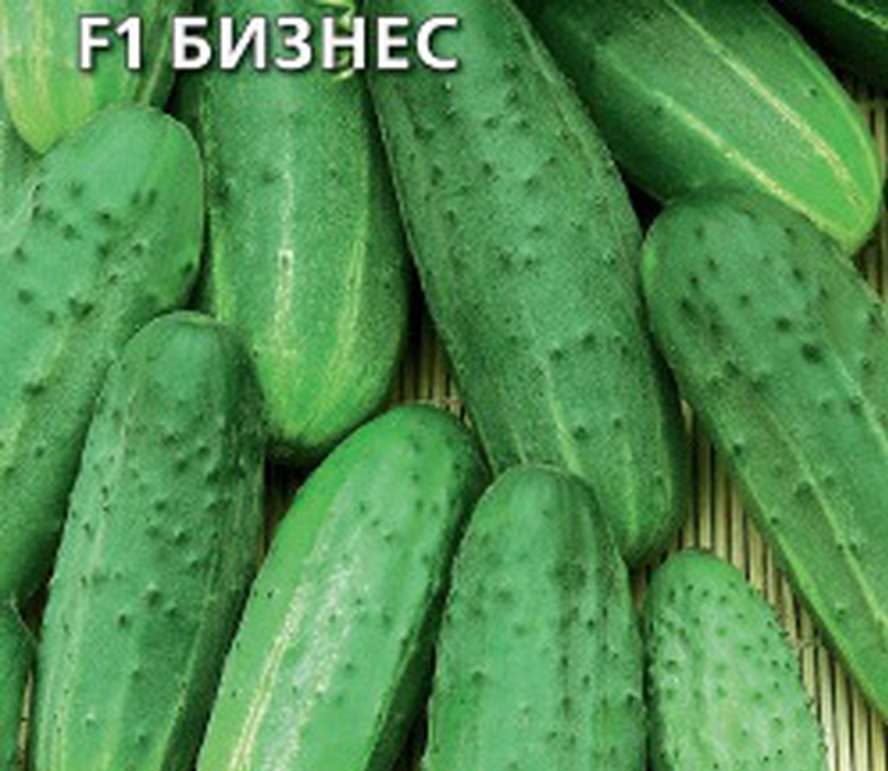
Features of growing cucumbers in greenhouses made of polycarbonate
A polycarbonate greenhouse is the best option for growing vegetables in the Moscow region, because an unstable climate rarely allows you to grow a good crop. Beginning gardeners, after choosing seeds, should be familiar with when to plant cucumbers for seedlings, when to plant seedlings in a greenhouse and how to care for plants.
When to sow cucumbers for seedlings in 2019 in the suburbs
To get a high yield, you need not only to pick the best varieties for the greenhouse, but also know the timing of planting seeds for seedlings in 2019 in the Moscow region. To select a sowing date, gardeners are advised to pay attention to the following factors that affect germination:
- temperature regime of the region;
- suitable days for sowing;
- a certain time during the day.
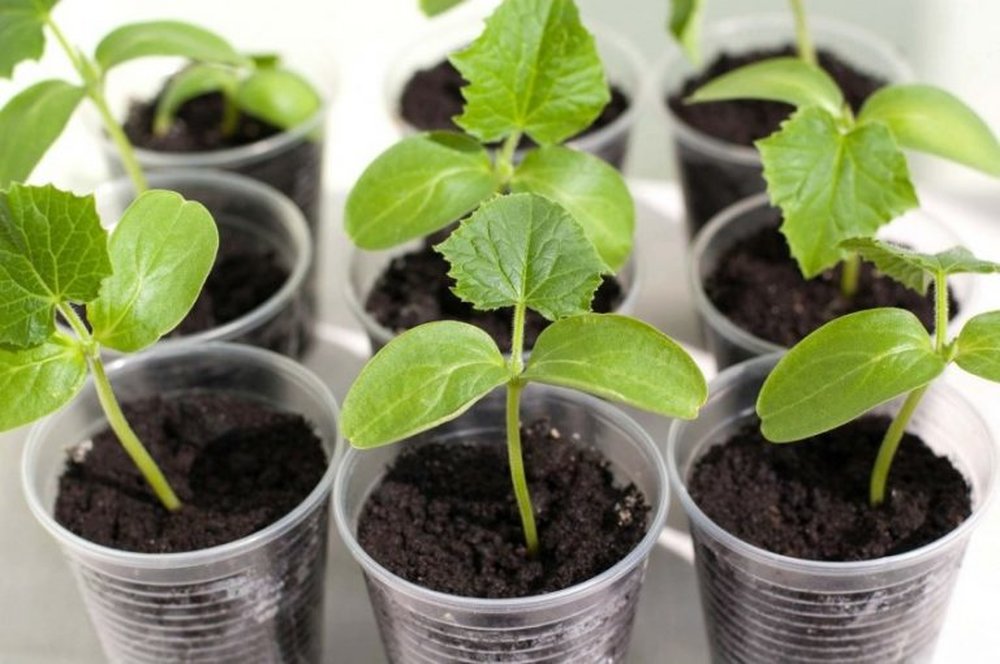
To select a suitable day, some vegetable growers are guided by the phases of the moon (lunar calendar). The growing moon is considered an excellent time for sowing, and the closer to the new moon, the better the seedlings will be.
Planting seedlings in a greenhouse
Cucumbers are heat-loving crops, so in closed ground they give an excellent harvest. The optimal time for planting plants in the soil is three weeks after sowing.
Before as plant seedlings in a greenhousePrepare the soil. This procedure is carried out every 3-4 years. To do this, prepare:
- liquid droppings of chickens;
- urea
- polyethylene film.
For 1 m², add 1 teaspoon of urea and dig the soil well. After this, the beds are watered with hot water with chicken droppings (200 grams of droppings per 10 liters of water). The soil is covered with a film for 10 days.
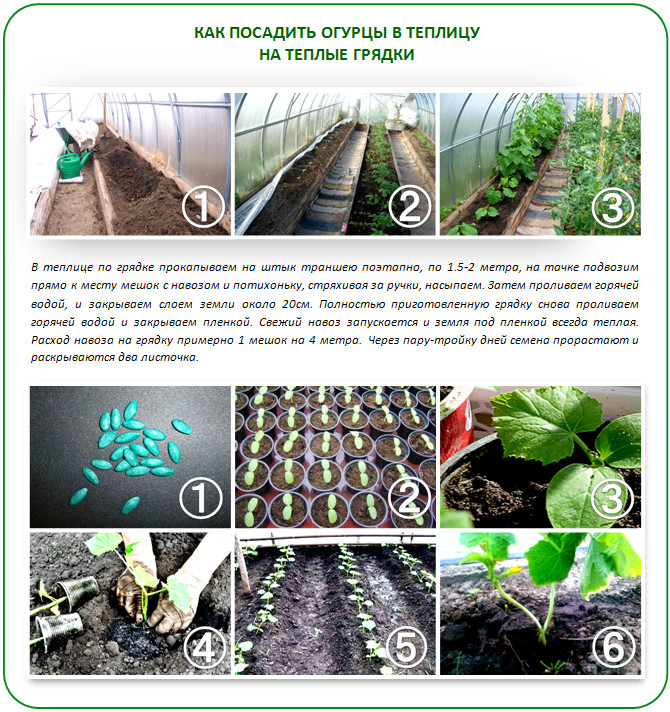
After the sprouts form three leaves, they are planted in the greenhouse. The soil is divided into longitudinal beds, on which small pits are made at a distance of 50 cm from each other. The depth of the hole should not exceed 10 cm. It is advised to pour each hole with a solution of potassium permanganate or copper sulfate. By transshipment, a plant is planted in a hole, sprinkled with soil and lightly crushed for stability around the sprout.
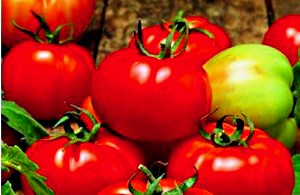 You may be interested in:
You may be interested in:Cucumber Care Rules
With proper care, even a beginner gardener can grow an excellent crop. Caring for greenhouse crops includes:
- soil loosening and regular weeding;
- watering;
- fertilizing;
- fungicide treatment of plants;
- nipping the bush.
After planting, seedlings are watered no more than once every three days. With the onset of hot days, the frequency of watering is increased to 1 time in 1-2 days. After watering, it is necessary to loosen the soil.
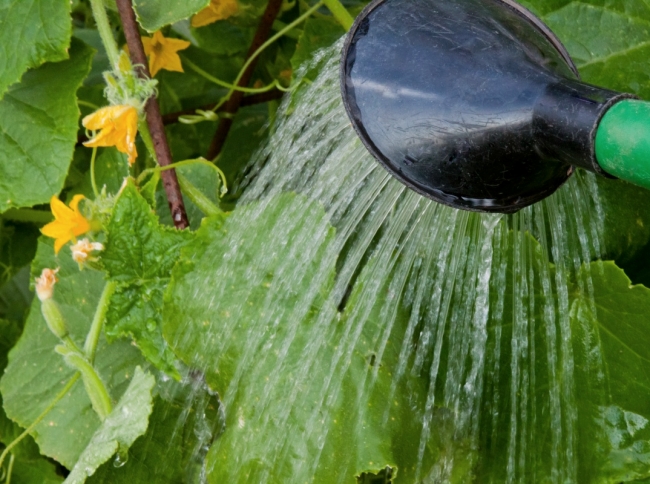
Cultivation includes the introduction of fertilizing. During the season, fertilizer should be applied at least three times. You can use chicken or cow droppings, previously diluted with water. Mineral fertilizing is selected based on the composition of the main soil.
The formation of greenhouse cucumbers is carried out on a whip, which has 8 leaves. To do this, pinch the shoot, but if the culture is formed into one stem, you can not pinch the top. Greenhouse varieties are grown vertically, so a trellis should be installed. Plants should be inspected regularly, because they can be affected by diseases or pests.
Common questions
Indoor soil - an excellent solution for growing cucumbers in the suburbs. Thanks to breeding, today there are many varieties bred specifically for greenhouse conditions, so each grower will be able to choose the most suitable seeds for themselves.

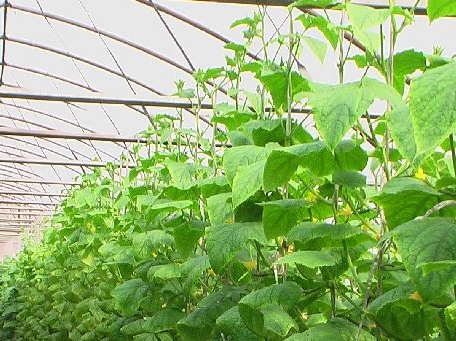
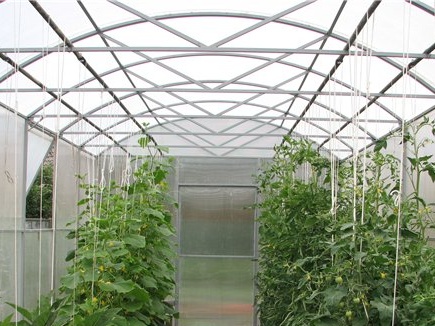
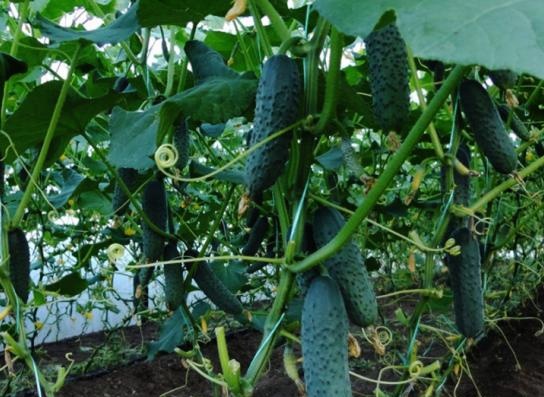
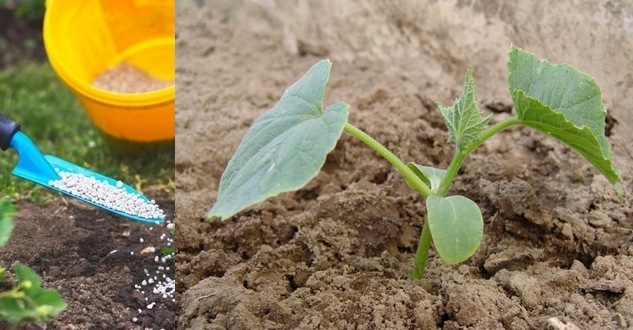
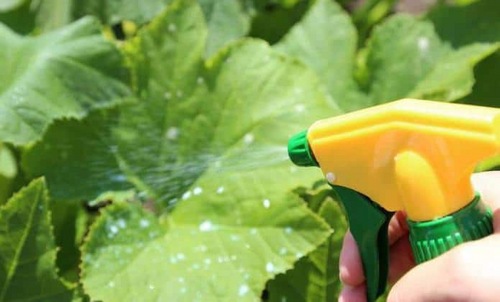
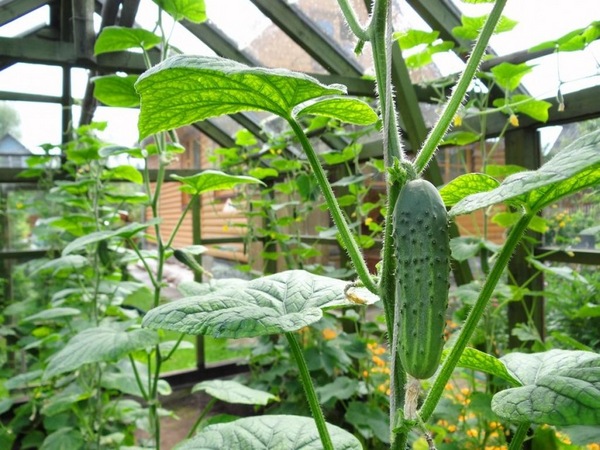
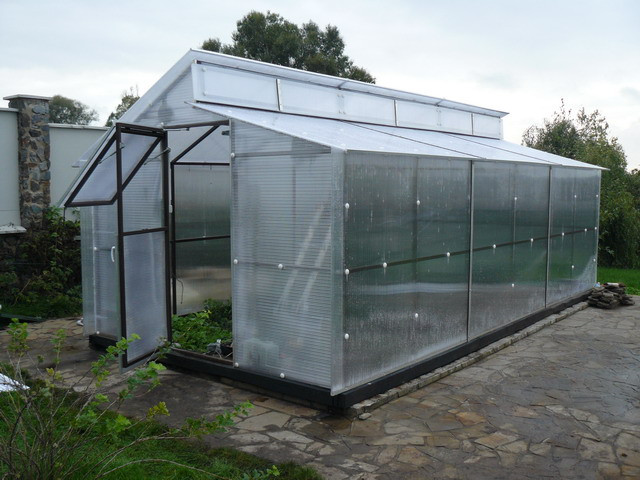
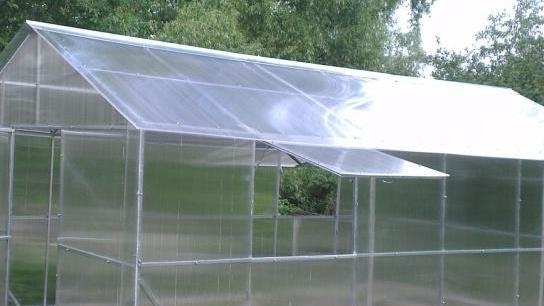
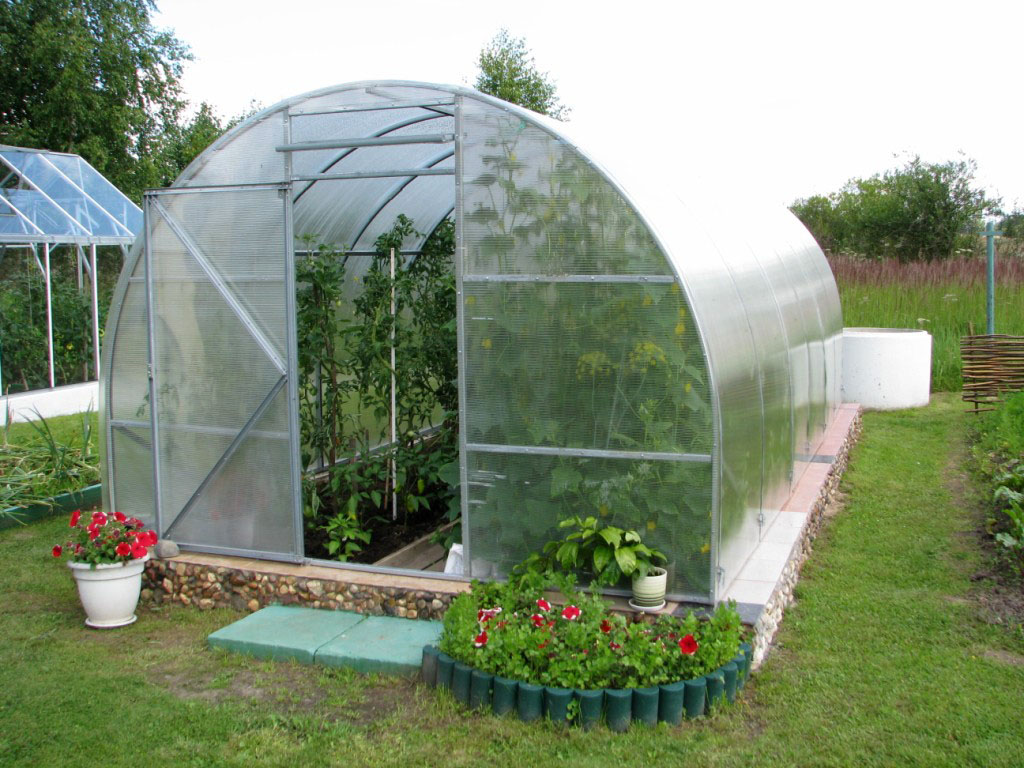
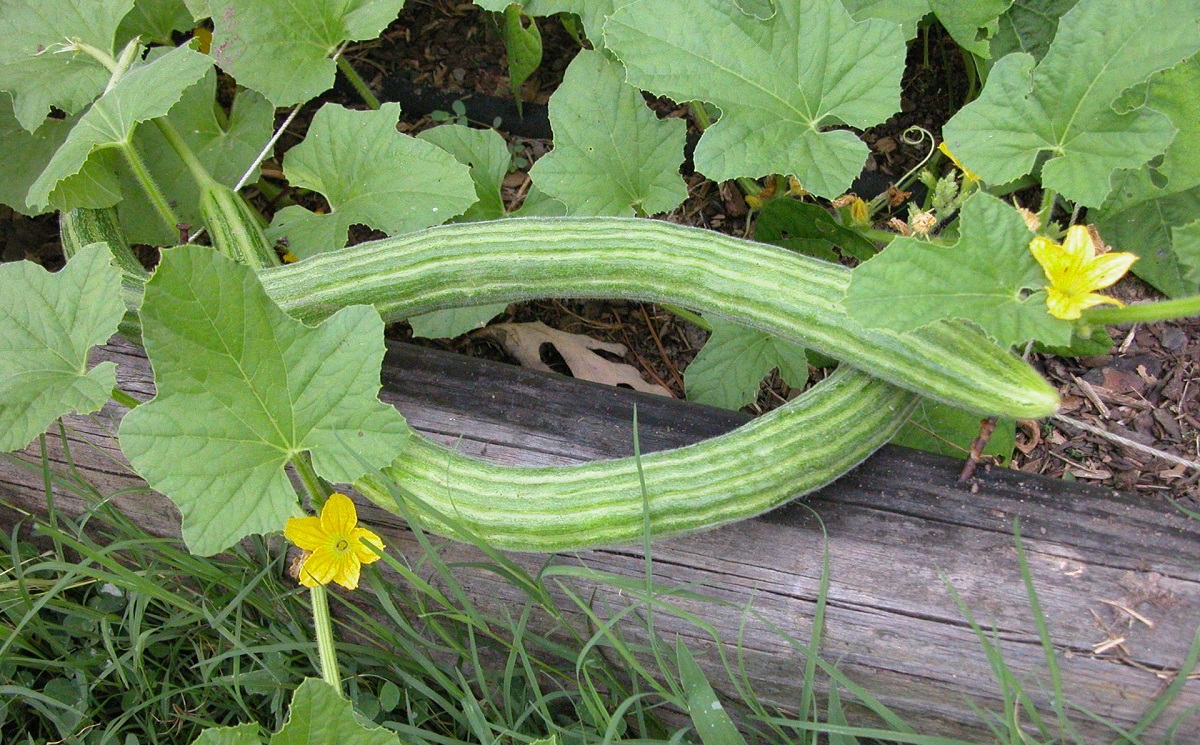 Armenian cucumber with melon flavor: description and characteristics, reviews
Armenian cucumber with melon flavor: description and characteristics, reviews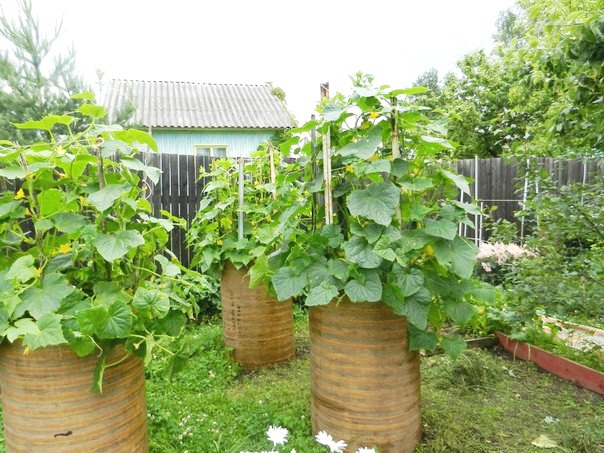 Do-it-yourself vertical beds for cucumbers: schemes, photos
Do-it-yourself vertical beds for cucumbers: schemes, photos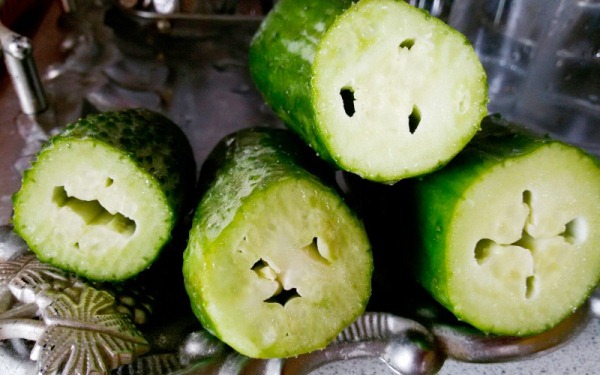 Hollow cucumbers: reasons for the appearance of hollow, what to do
Hollow cucumbers: reasons for the appearance of hollow, what to do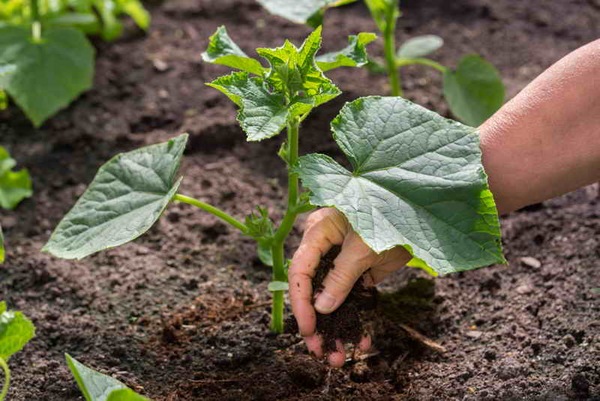 Which manure is best for cucumbers: application, how to breed
Which manure is best for cucumbers: application, how to breed